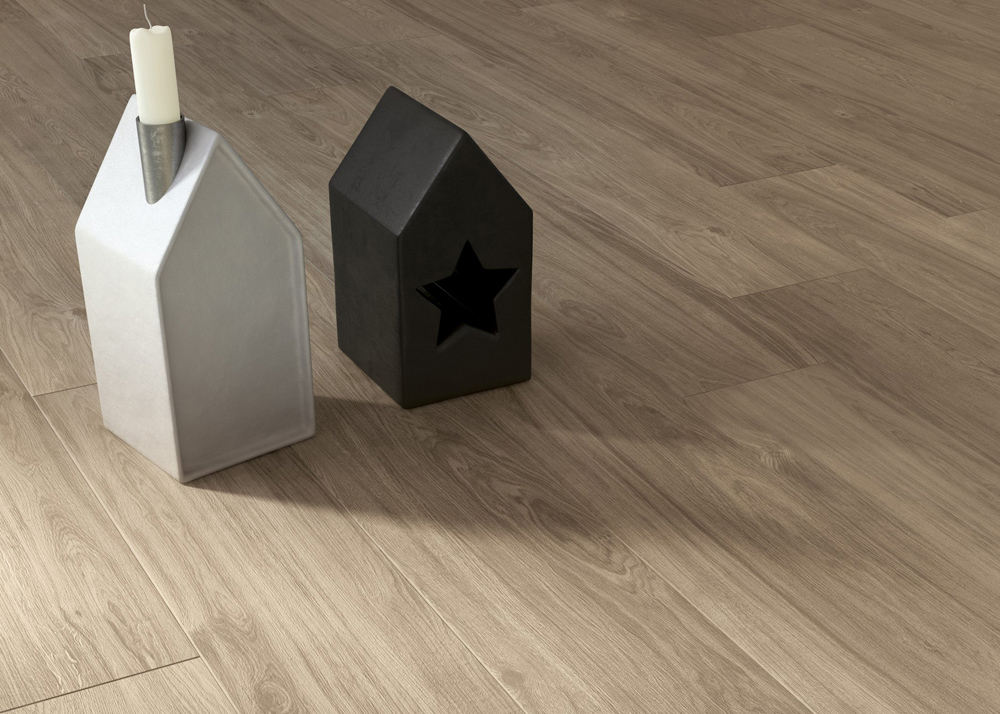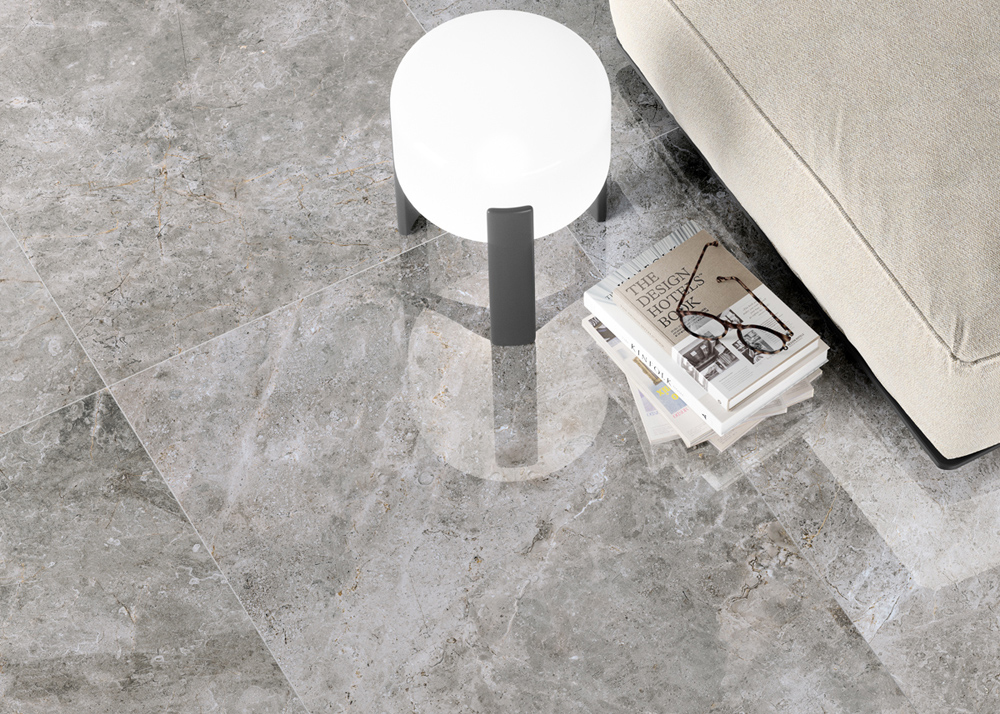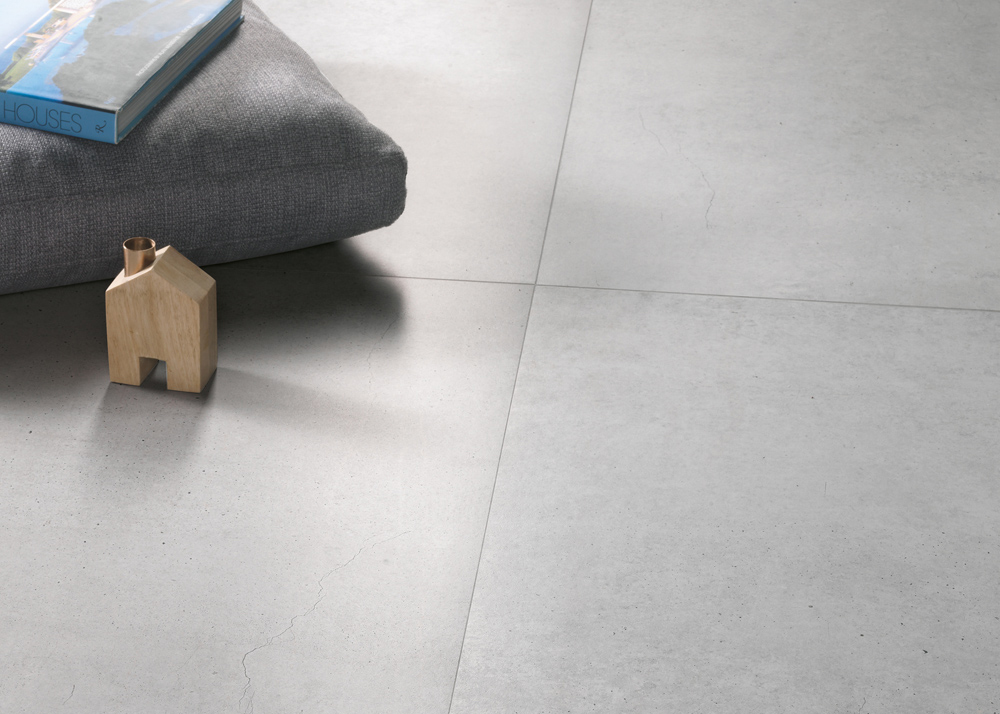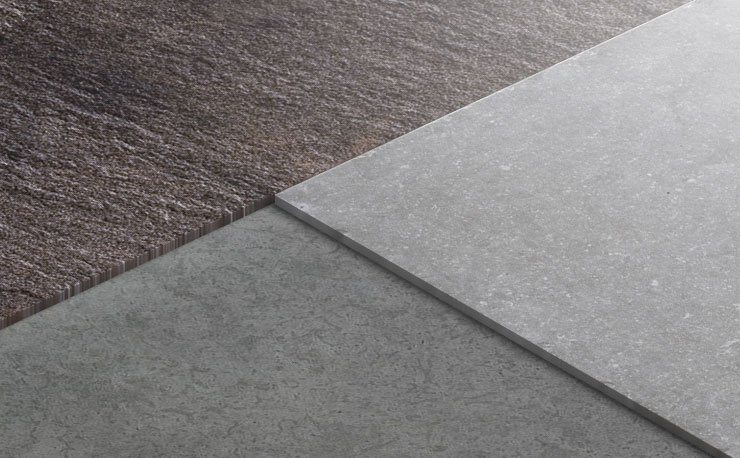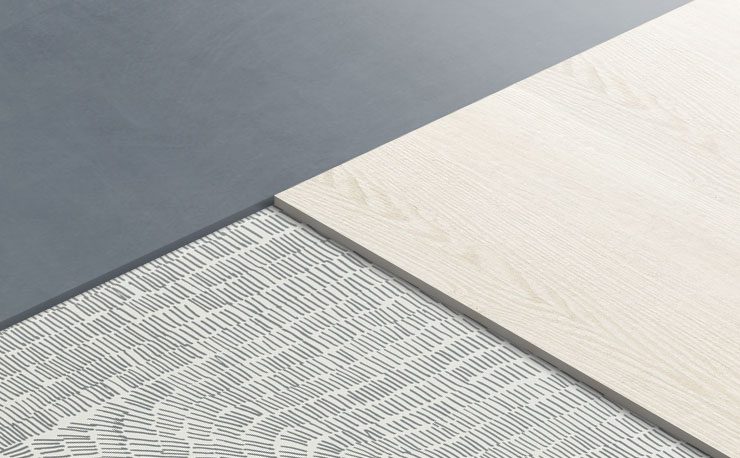What is grès porcelain stoneware?
Grès Porcelain stoneware is a ceramic with a compact, hard, coloured and non-porous body. The word “grès” means that the ceramic body of the tile is extremely vitrified, that is to say compact, hence the exceptional great resistance. The result is a lean clay body, little refractory, fired in a kiln (at 1200-1400 C°) until it reaches a non-porous vitrification and a complete water-proofing.

Porcelain Floor Tiles
Porcelain floor tiles are made by materials featuring the lowest water absorption levels, which means the quantity of water that the slab can absorb under certain conditions.
This feature (that is also one of the two parameters on which the EN ISO standards classification is based) also results in the highest level of bending strength, that is to say, the maximum tension that the material, subject to an increasing bending action, can bear before breaking.
Amongst the most significant features of grès porcelain stoneware there is also the high abrasion resistance, which means the resistance of the surface against the action related to the movement of bodies, surface or materials in contact with it.
Cleaning and Maintenance
Cleaning the porcelain tiles with pure water is not enough and we strongly recommend not to use substances such as naphtha oil, vinegar etc… Specifically designed cleaners are required in order to remove the calcareous wastes of mortar and grouts that adhere to the dirt.
Porcelain vs. Ceramic Tile
The are many ceramic materials, each one with precise features and destination use. Discover here the different type of porcelain tiles.
Tips for Laying Floor Tiles
The latest state-of-the-art porcelain stoneware tiles have turned to the manufacturing processes typical of stone materials allowing for the so called “minimum grout line installation”.
Discover here the installation advice for porcelain tiles.
Advantages of Porcelain Tiles
- Impact strength and stress resistance
- Wear resistance
- Scratching resistance
- Resistance to frost
- Resistance to chemicals
- Stain resistance
Technical features of Porcelain Tiles
Water absorption UNI EN ISO 10545-3
Absorption is the ceramic product capacity for water penetration. Obviously, this is greatly important for the determination of the product mecha-nical features. The CEN European Regulations subdivide pressed tiles into five groups accor-ding to their absorption percentage: ANNEX G, H, J, K, L.
Bending resistance UNI EN ISO 10545-4
Bending resistance is the maximum load applied at three points that the tile can bear without breaking. The level is expressed in N/mm2 and ISO 10545-4 standard defines the following minimum accettable settings:
- BIb 35
- BIIa 30
- BIIb 18
Coefficient of restitution (COR) UNI EN ISO 10545-5
The coefficient of restitution measures the tile impact resistance by dropping a steel ball from a fixed height and measuring the height of rebound. Annex P of Standard 14411 recommends a value of 0.55 for tiles undergoing light impacts but it does not set limits to be respected.
Deep abrasion resistance UNI EN ISO 10545-6 (full-body coloured ceramic tiles classified as ugl)
Method only applicable to unglazed ceramic tiles. The testing method and the expression of results are the same as those indicated in the previous European Standards (EN 102). Only one modification has been made regarding the material to be used for the calibration of the instrument. The calibration procedure remains unchanged.
Abrasion resistance UNI EN ISO 10545-7 (glazed ceramic tiles classified as gl)
Abrasion resistance is the capacity of the glazed surface to resist the wear caused by foot traffic or the abrasion caused by mechanical equipment (lift trucks, etc.). The wear action is strictly linked the mechanical agent (rubber sole, leather sol, etc.), the material carried on to the surface (water, sand, mud, etc.) and classified in five categories depending on the areas they are be used in:
- PEI I Tiles for areas with light traffic and without abrasive dirt, e.g. bathrooms, bedrooms
- PEI II Tiles for areas with average traffic and medium to low abrasion, e.g. studyng rooms, living rooms
- PEI III Tiles for areas with higt medium to high traffic and average abrasion, e.g. foyer, kitchen in private residances
- PEI IV Tiles for areas with intense traffic, e.g. restaurants, offices, shops, public offices (exluding floors under cash desks and shop counters and narrow unavoidable passageways)
- PEI V Tiles for areas with especially intence traffic
Coefficient of thermal linear expansion UNI EN ISO 10545-8
The test determines the coefficient of expansion of the ceramic tiles according to temperature changes. The coefficient of linear thermal expansion is set within the range of temperatures from ambient temperature to 100°C.
Resistance to thermal shock UNI EN ISO 10545-9
Resistance to thermal shock is the capacity of a glazed surface not to suffer visible alteration because of the “shock” caused by difference in temperature. The test inolves a number of repeated cycles with the tile immersed in water at room temperature, after which it is placed in an oven at temperature higher than 105°C. On the basis of the test, the tile is defined as resistant or not.
Frost resistance UNI EN ISO 10545-12
Frost resistance is a quality tiles have when are subjected to water at temperatures lower than 0°C without being damaged by stress generated by their moisture content freezing. The tiles are defined as resistance or not.
Resistance to chemicals UNI EN ISO 10545-13
Resistance to chemicals is the capacity of the glaze at room temperature to tolerate contact with chemicals (domestic products, staining chemicals, pool additives, acids and solvents) without alteration in its appearance.
Determination of resistance to stains UNI EN ISO 10545-14
Method applicable to all working surfaces of ceramic tiles to determine their resistance to stains. Each staining agent must remain on at least 5 testing samples, for at least 24 hours, whose working surfaces has been cleaned and dried beforehand. Removal of the staining agents takes place in subsequent steps using various cleaning agents and cleaning procedures.
- Class 5: the stain is removed using hot water.
- Class 4: the stain is removed using a weak commercial cleaning agent.
- Class 3: the stain is removed using a strong commercial cleaning agent.
- Class 2: the stain is removed using solvent, such as acetone for example.
Lead and cadmium discharge UNI EN ISO 10545-15
This test determines the quantity of lead and cadmium released by the glaze of ceramic tiles. The test is made by exposing the surface of tiles to an acetic acid solution.
Fire resistance
This is the behaviour of a given material that by its decomposition contributes to the fire affecting it under particular conditions. (UNI CEI EN ISO 13943:2004). The reaction to fire of a material is usually expressed in classes. Ceramic is usually included in Class A1 (non combustible materials).
Assessment of slip resistance
DIN 51130 “R” Index of slip resistance, depending on the angle of inclination at which a person walking on an inclined plone cannot keep his balance.
Measurement of dynamic friction coefficient in compliance with the B.C.R.A. Rep. CEC/81 standard.
Dynamic friction coefficient to standard ANSI A137.1-2012 (BOT3000).
Friction coefficient to standard BS 7976-2:2002 (CEN/TS 16165, Annex C) Pendulum Friction Test.
Project Solutions
Floating Porcelain Tile System
The floating floor is the perfect solution for those looking for highly resistant, easy to clean floors combined with Italian elegance and design.
Porcelain Rainscreen
Our porcelain tiles of various sizes are suitable for the creation of rainscreens.
A dry tile-laying system
SET-IN: the porcelain tile easy to install as it does not require adhesives or grouts.
More info about porcelain tile.
